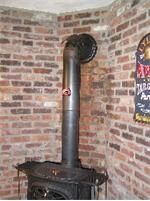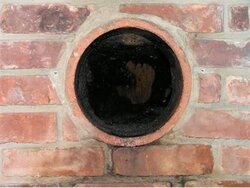I have a vc intrepid II connected to an outside masonry chimney that had a franklin stove with 8 inch stove pipe previously. I have a 6 to 8 inch increaser right after the 90 degree that fits into the wall thimble. On occasion, I get gooey creosote leaking out of the thimble and down the brick wall(two days ago). Not only is it a pain in the a$$ to clean, but I'm sure not too safe. I'm aware that all the pipes should fit into one another male end down to contain this to the stove, but how do I achieve this at the thimble? The other problem is, if you do achieve this, the creosote would have to flow upwards thru the increaser. I'm fairly new to all this (three years burning) so any help would be greatfully appreciated. Thanks
stove pipe to thimble question
- Thread starter stop drop & roll
- Start date
-
Active since 1995, Hearth.com is THE place on the internet for free information and advice about wood stoves, pellet stoves and other energy saving equipment.
We strive to provide opinions, articles, discussions and history related to Hearth Products and in a more general sense, energy issues.
We promote the EFFICIENT, RESPONSIBLE, CLEAN and SAFE use of all fuels, whether renewable or fossil.




 hh: I guess Barry(?) doesn't own a chainsaw ? lol
hh: I guess Barry(?) doesn't own a chainsaw ? lol